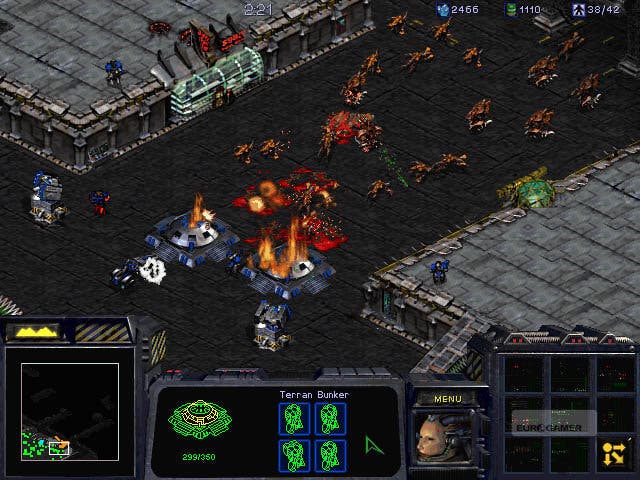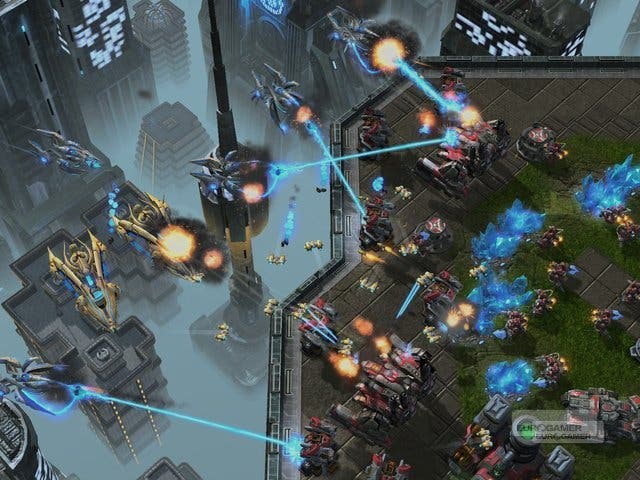Blizzard's Rob Pardo
How the world's most successful studio makes games.
Sitting in an office in the memorabilia-filled halls of Blizzard's nerve-centre in southern California, Rob Pardo is unassuming, chirpy and sincere - a manner which belies the fact that this is unquestionably one of the most influential men in the games business.
In fact, Time Magazine reckoned that Rob Pardo was one of the 100 most influential people in the entire world back in 2006. His listing in the magazine's annual (and usually contentious) countdown placed him in hallowed company - Nintendo's Shigeru Miyamoto and GTA producers Dan and Sam Houser are the only other gaming names Time has ever placed on the list, as far as I can gather.
The Time listing is probably a good ice-breaker at parties, but as gamers, you're likely to be more impressed by the rest of his CV. Time featured him for his role as lead designer on World of Warcraft, and he also headed up the design team on first expansion The Burning Crusade, but prior to that he was a designer on StarCraft and Diablo II, and lead designer of StarCraft: Brood War, Warcraft III and its Frozen Throne expansion.
The man knows his game design, it's fair to say. After all, he cut his teeth on one of the toughest tasks in gaming - balancing the races in the original StarCraft - and if there's one piece of game design which has been tested to the point of destruction over the years, it's StarCraft's balance.

Nowadays he's Blizzard's executive vice president of game design, but he's also come full circle. StarCraft was the first game that he worked on after joining Blizzard, and today we're here to talk about the forthcoming StarCraft II, previewed earlier this week. But, given Pardo's involvement in all of Blizzard's major franchises, we'd also like to pick his brains about how a company that has produced nothing but solid-gold hits in recent years goes about making its games.
One of the first things we discuss is the balance between hardcore and casual players - especially relevant to StarCraft, I propose, given the obvious difference between the average gamer mucking about with friends and the Korean pro-gamer scene.
"It's not really any different for StarCraft than it is for World of Warcraft, Warcraft III or Diablo, to be honest," Pardo says. "We really try to serve both audiences.
"One of the ways we do that is that we build for the depth first - for the hardcore first. When we're first prototyping and working on the game, we're very meticulous. The game speed has to be fast, the units have to be perfect, we have to be thinking about balance. We don't balance it early on, but we have to be thinking about whether each unit is balanceable, whether we have all the right hooks in the game to be able to do it.

"Then, what we do gradually once we have that basic game - which is really fun to all of us, because a lot of the people here are pretty hardcore - then we really start trying to make the game more and more accessible. We certainly really try to keep both audiences in mind, and there are things that we do for both audiences to ensure that.
"The reason we build the game in that order is because you can easily come up with game design concepts or ideas or mechanics that are shallow and designed for a more casual, broad-market gamer - they're not going to put fifty-five hundred hours into a game, right? But we really want to make sure that we build in those features that have a lot of depth and a lot of replayability first, because we can always make that stuff much more accessible for someone that's not going to put in the same amount of hours."
In order to achieve that aim, Blizzard flies in the face of some conventional thinking on game design. Rather than pinning down exactly what the team wants to achieve before starting development - the ideal-world scenario many designers aim for - the company believes in building a rough version of the game as early as possible, and then experimenting and polishing as they go along.

